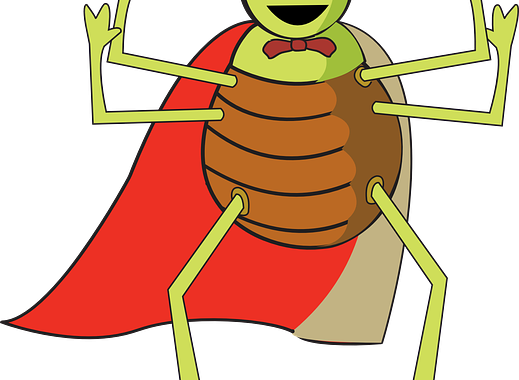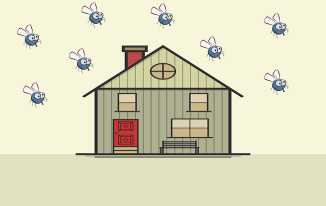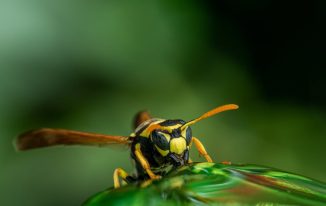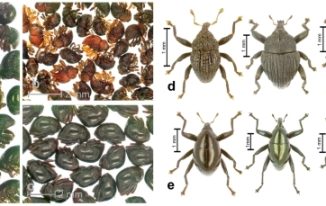How to Control Fleas
Contents
– Focus on fleas
– Step 1: Treat fleas on your pet as soon as possible
– Step 2: Remove flea eggs and larvae from the home
– Step 3: Re-treat to prevent further flea infestation
– Step 4: Use preventive flea treatments
Are your kids scratching after a weekend in the country playing with the neighbours’ cat and dog? Is the itching localized mainly to the ankles and legs? Have you noticed small blood spots in their clothes and bedding? No doubt, they have been victims of a flea. The bites of this insect cause intense itching and sometimes allergic reactions. It also happens, although very rarely, that fleas transmit diseases. Here is a detailed explanation of fighting fleas and getting rid of an infestation.
Focus on fleas
The flea has several characteristics: brownish-black in colour, measuring between 1 and 6 mm.
– It is a jumping insect: thanks to its powerful legs, it can jump in a single bound up to 30 cm away.
– It is also a biting and sucking insect: it feeds on the blood of its host (mammals, including humans).
– The most common fleas are those of dogs and cats.
Note: we sometimes hear the term “bed fleas”; this is a misnomer because, in reality, they are not fleas, but bedbugs, against which the treatment will be different.
A very fast infestation
Because of their mode of reproduction, infestation occurs very quickly, which is why it is essential to treat fleas as soon as possible.
– After mating, female fleas lay 30 to 50 eggs per day in the hair of the host animal for a period that can last up to 2 months.
– When the animal moves, the flea eggs fall everywhere and hatch quickly.
– Between the egg just laid and the larva reaching the adult stage, only 3 weeks pass.
– The larvae then infiltrate multiple places in the house: cracks in the floor, grooves in the parquet, folds in a sofa, under the carpets…
Important: if flea bites cause your child to be very itchy, consult a doctor who will prescribe an effective cream.
1. Treat fleas on your pet as soon as possible
If your cat or dog is scratching, it probably has fleas. It’s vital to treat your cat or dog, its toys and any objects in contact with it as soon as possible.
In addition, even if your other pets do not show signs of infestation, it is also essential to carry out an oral and cutaneous flea treatment.
The veterinarian prescribes each animal’s oral treatment (tablets, ampoules).
Warning: never treat a cat with an anti-parasite product for dogs and vice versa; it could be perilous.
– The antiparasitic skin treatment comes in different forms (pipettes, sprays, etc.), available at the veterinarian’s office, in pharmacies or pet stores.
Important: in all cases, strictly respect the doses and the instructions for use.
In addition to these treatments, cleaning is necessary.
– Shake out the blankets and other washable objects in contact with your animals, then wash them at 60°C.
– For items that you can’t wash (baskets, kennels, etc.), shake out any that can be washed outside, then treat them all with a special flea spray.
2. Remove flea eggs and larvae from the house
The same day you treat your pets, sanitize the house thoroughly. There are two ways to do this.
Steam cleaning or vacuuming
If you have a steam cleaner, use it throughout the house:
– on the floor, insisting on the grooves if you have parquet,
– on furniture, especially armchairs, sofas, cushions, etc.
If you don’t have a steam cleaner, vacuum the entire house very carefully:
– insist on the areas mentioned above;
– Remove the vacuum bag and, if possible, burn it;
– then, spray the floor, furniture and objects in contact with your pets with a flea spray.
Aerosol sprays
Treat different rooms with a self-dispensing aerosol (“fogger”): these self-dispensing insecticide cans come in several sizes, depending on the surface concerned.
– For greater effectiveness, it is better to buy several small cans rather than one.
– Strictly follow the directions for use, including:
◦ close all windows,
◦ open closet doors,
◦ and get everyone, including pets, out of the house as soon as you start the broadcast.
Note: the old fumigation method tends to be abandoned in favour of the “fogger”, which is easier to use and very effective.
3. Re-treat to prevent further flea infestation

Once you have treated the house, animals, and belongings, you must wait 15 days before repeating the treatment. This is because, during this time, the adult fleas may have laid more eggs.
Note: if you have a garden, it may be contaminated; keep your pets indoors for 30 days if possible.
To prevent further infestation, treat your pets regularly:
– Administer the same treatments as for the cure every month (oral, pipette or spray);
– Adopt the natural treatments mentioned in step 2;
– Brush and comb your pets’ fur very regularly;
– regularly shake baskets, blankets, etc., outside;
Above all, pay attention to your pets’ behaviour. As soon as they start scratching, start the flea treatment.
4. Carry out preventive flea treatments
Preventive flea control will save you time and effort later on. Several methods work well, especially when combined:
– Brush your pet thoroughly, followed by regular combing with a flea comb;
– Put on a commercially available flea collar, even if it’s not 100% effective;
– rub his coat with a neem oil lotion (5 ml of neem vegetable oil mixed with 10 ml of white vinegar);
– for dogs, think of essential oils such as lemon, cedar, citronella, eucalyptus, lavender, and peppermint;
– for cats, avoid essential oils but prefer hydrolats.
Note: these lotions, essential oils or hydrosols are also effective when sprayed on baskets and sofas.
Equipment needed to fight fleas.
Vacuum cleaner
Anti-flea collar
Vegetable oil
Essential oils
Steam cleaner
White vinegar




